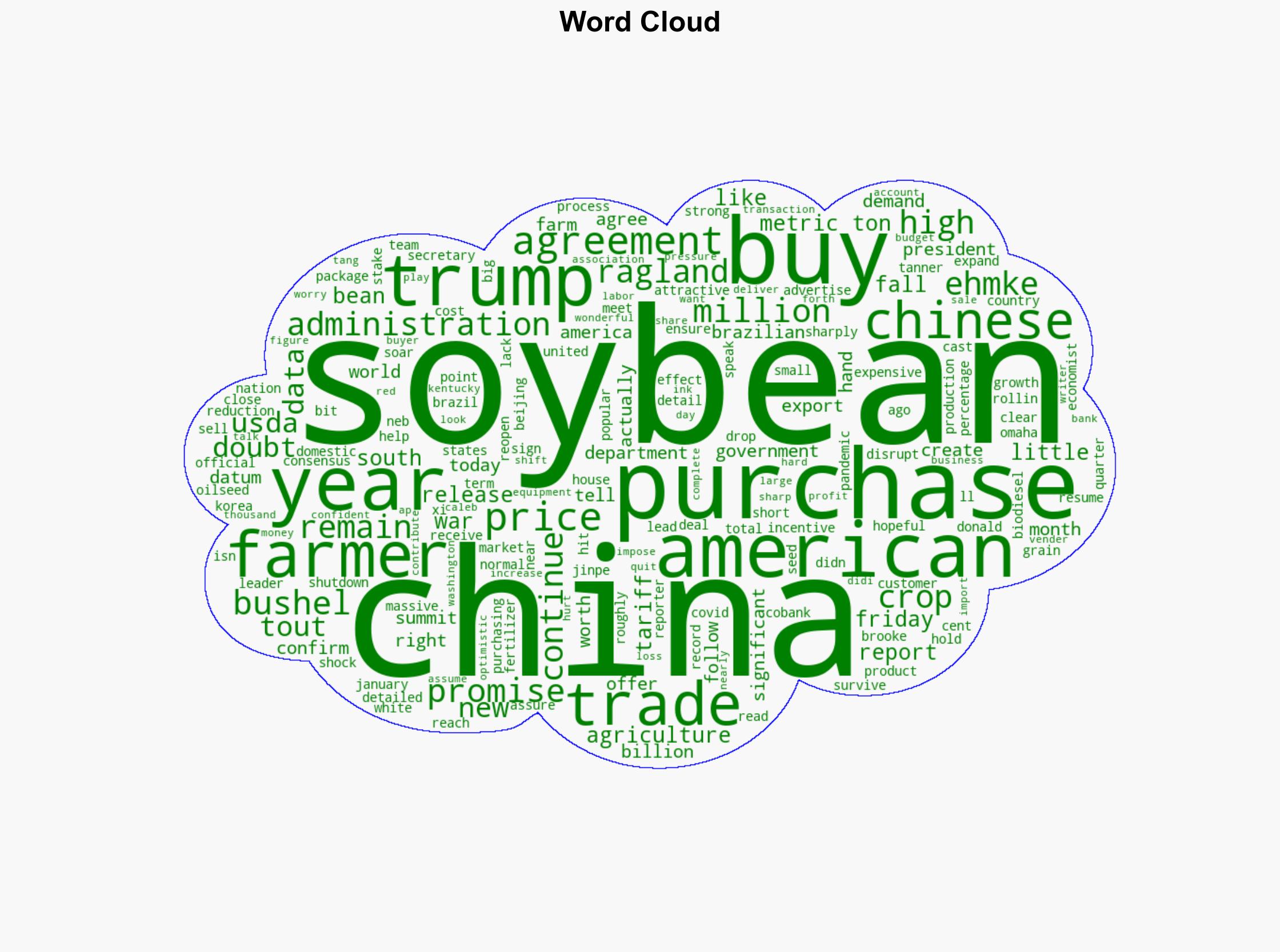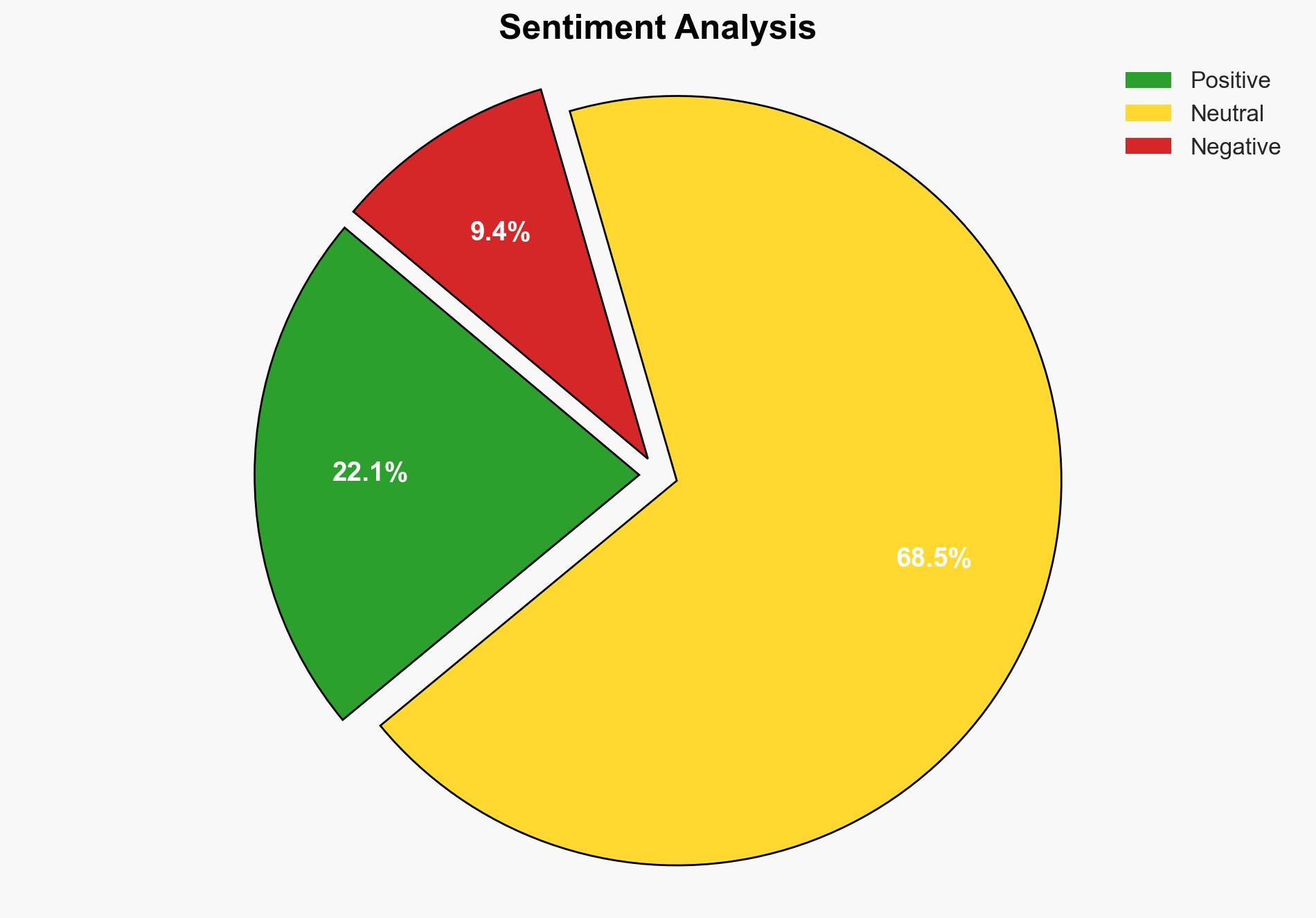USDA data casts doubt on Chinas soybean purchase promises touted by Trump – Boston Herald
Published on: 2025-11-15
AI-powered OSINT brief from verified open sources. Automated NLP signal extraction with human verification. See our Methodology and Why WorldWideWatchers.
Intelligence Report: USDA data casts doubt on China’s soybean purchase promises touted by Trump – Boston Herald
1. BLUF (Bottom Line Up Front)
The most supported hypothesis is that China’s soybean purchase commitments are overstated and unlikely to be fulfilled as promised. This conclusion is reached with moderate confidence due to conflicting reports and economic incentives favoring alternative suppliers. Strategic recommendation includes diversifying agricultural export markets and preparing contingency plans for domestic farmers.
2. Competing Hypotheses
Hypothesis 1: China’s soybean purchase commitments are overstated and unlikely to be fulfilled as promised. This hypothesis is supported by USDA data showing a shortfall in expected purchases and economic incentives for China to buy from Brazil.
Hypothesis 2: China’s commitments are genuine and will be fulfilled, but delays and market fluctuations are causing temporary discrepancies. This hypothesis considers the possibility of strategic timing and negotiation tactics by China.
Hypothesis 1 is more likely due to the economic rationale for China to diversify its suppliers and the historical context of trade tensions.
3. Key Assumptions and Red Flags
Assumptions include the reliability of USDA data and the transparency of Chinese trade commitments. Red flags include the lack of detailed purchase agreements and the potential for political motivations influencing public statements. Deception indicators are present in the form of vague assurances from Chinese officials.
4. Implications and Strategic Risks
The primary risk is economic, with potential financial strain on U.S. farmers if expected purchases do not materialize. Politically, failure to fulfill purchase promises could strain U.S.-China relations further. There is also a risk of misinformation affecting market stability and farmer decision-making.
5. Recommendations and Outlook
- Actionable steps include diversifying export markets and providing financial support to farmers affected by trade uncertainties.
- Best Scenario: China fulfills its commitments, stabilizing the market and benefiting U.S. farmers.
- Worst Scenario: China shifts purchases entirely to Brazil, causing significant economic harm to U.S. agriculture.
- Most-likely Scenario: Partial fulfillment of commitments with continued market volatility.
6. Key Individuals and Entities
President Donald Trump, Chinese leader Xi Jinping, USDA, Agriculture Secretary Brooke Rollin, Tanner Ehmke (CoBank), Caleb Ragland (American Soybean Association).
7. Thematic Tags
Regional Focus, Regional Focus: U.S, China, Brazil
Structured Analytic Techniques Applied
- Causal Layered Analysis (CLA): Analyze events across surface happenings, systems, worldviews, and myths.
- Cross-Impact Simulation: Model ripple effects across neighboring states, conflicts, or economic dependencies.
- Scenario Generation: Explore divergent futures under varying assumptions to identify plausible paths.
Explore more:
Regional Focus Briefs ·
Daily Summary ·
Support us
·





